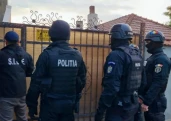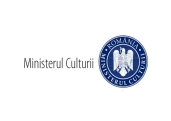The rarest fish in Europe, the sculpin-perch, Asprete, or Romanian darter (Romanichthys valsanicola), known to the whole world after Romanian high altitude climber Alex Gavan started an extensive project to save it, lives and breeds in the Valsan river (left tributary of the river Arges), the Fagaras Mountains, where a record number of individuals was identified a few days ago, as part of an inventory action.
"Although the world identifies me, objectively, as the initiator of the project, I coordinate the project (...), I consider myself the 'servant of the Asprete'. I am here to attract the right resources and energies of any nature, so that we can save it and preserve it. (...) That bond I was talking about: I am the one who grew up on Valsan, I swam in the water where the Asprete swim, I knew of its existence, I learned that it is living the last second of its existence and, somehow, if I hadn't initiated this project and the Asprete would have disappeared, somehow I would have felt responsible for it," Alex Gavan told AGERPRES.
The Romanian mountaineer decided to tell the world about this fish, a monument of nature and considered a living fossil, right from the peak of Gasherbrum 2, from 8,035 meters above sea level, in the Himalayas, the last peak over 8,000 meters he conquered.
Back then, in July 2019, barely breathing, he immortalized himself holding a small photo of the Asprete, and even tried to make a video in which he could tell the world about the small fish from his childhood river, but the lack of oxygen and the conditions at over 8,000 meters made the recording unusable.
He then returned to the country and launched the project "The Asprete Lives", organized hundreds of meetings with those who could help save this species, brought them to the same table and began his "mission", in the service of the Asprete, as he likes to say.
According to the official page, the project is based on several pillars, the first being "the creation of the Asprete Sanctuary on the banks of the Valsan river, at Galesu - the research and breeding base in captivity," which will also double as a green, experiential, immersing visitor center and community hub.
The project also includes the ecological reconstruction of the Valsan river, followed by the Arges and Doamnei rivers, the historical habitat of Asprete, in which the fish to be later restocked, but also "having a firm but kind and efficient advocacy voice, in a manner full of kindness lovely". Another pillar of the project aims at continuous education, involvement and empowerment of the local community.
Since its launch in 2019, numerous activities have taken place as part of the project, with an emphasis on improving the habitat conditions of the Asprete, affected by human activities.
Three years after the launch of the project, a few days ago, the largest inventory action of the species took place, since its discovery in 1956 (the year the Asprete was also found in the Arges and Doamnei rivers) until today.
"Historic moment for the legendary and enigmatic Asprete (Romanichthys valsanicola), the rarest fish in Europe and perhaps even in the world, but also for conservation in Romania and beyond. A record number of 58 individuals of Asprete were found in the Valsan river in the Fagaras Mountains. It is the only place on the planet where this species, considered a living fossil, still survives and, according to some estimates, contemporary even with the last dinosaurs. And we, humans, are the ones who brought it to the brink of extinction," Alex Gavan was writing at the time on Facebook.
In addition, another extraordinary thing discovered during the inventory action is that the Asprete's habitat, which was thought to be only 5 km and represents "a time capsule", has tripled and reached 15 kilometers, between the towns of Bradetu and Valsanesti.
Alex Gavan adds that the Asprete, "with its big and bulging eyes", who witnessed the birth of our species on this planet, is now witnessing, "shell-shocked" our own extinction.
"Just as the Asprete is in a race against time for survival, so is Homo Sapiens in a race against time for survival. Except that the Asprete is not responsible for its disappearance, while man is responsible for both the disappearance of the Asprete and for the disappearance of man," concludes Alex Gavan.
































Comentează